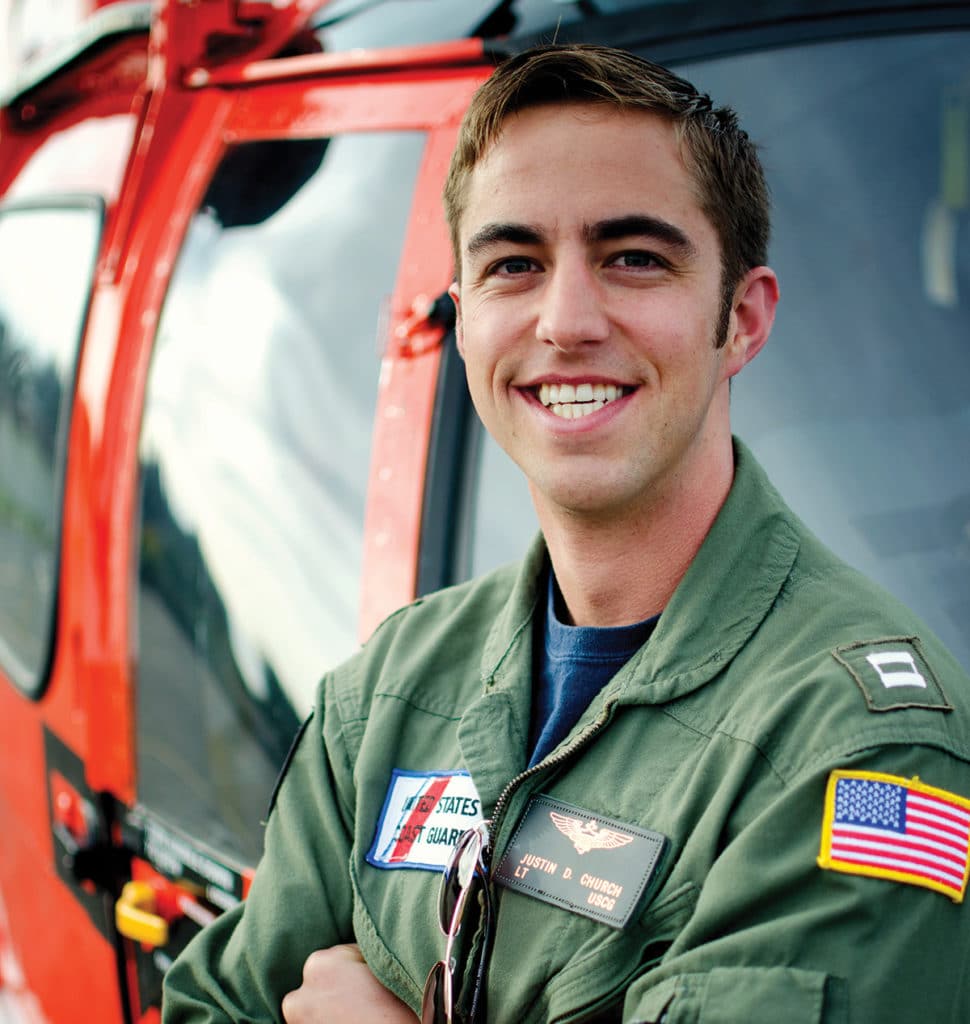
They’re the ones who keep us safe on the water when things get dangerous, so we interviewed Lt. Justin Church, a 30-year-old U.S. Coast Guard Aircraft Commander with 1,300 hours behind the controls, and who spends his off time on his boat.
What do you use for flying?
We fly a French-made helicopter, the MH-65D Dolphin. The mission of our unit here is search-and-rescue, that’s our legacy mission. Since 9/11 we have been a part of the Department of Homeland Security. We work with the state police enforcing fishing laws. That’s a lot of training. We’re continually training. If you don’t use it, you lose it.
How does an airborne rescue work?
We generally fly with a crew of four: two pilots, a flight mechanic and a rescue swimmer. The flight mechanic is the one who operates the hoist: He’s strapped in but free to move; he’s giving the pilot conning commands. The swimmer, he’s on the cable, the hoist hook. He wears a harness and different rescue devices, and he hooks up to the passenger so you don’t have the risk of holding on and dropping them. The main advantage of a helicopter is when mariners go into weather, they don’t have a long time for survival. Generally, it’s in the low 50s up to 55 degrees F. With just a life jacket, it’s potentially within an hour; if no life jacket, it’s 15 minutes. Aircraft are limited on size, but they can get on the scene quicker. Our surface asset, the 47-foot motor lifeboat, is a great vessel, and can take more people. That responds to most of the cases around here.
Describe a big mission.
One big rescue was over the summer of 2015 on July 21. F/V Jamie K — a 55-footer, wooden-hulled, classic Northwestern fishing vessel — was transiting north along the shoreline heading back to port. The weather was less than favorable, with 35-knot winds and seas 6 to 8 feet and building. They were trying to cut through a passageway in the middle of the night. The call came in at 02:11. The skipper was having issues with his steering. While troubleshooting it, his engine died, and he was running belowdecks and up top. Before long he felt it hit the rocks, then they washed into more rocks about 100 yards offshore. The ground parties couldn’t reach them. We were their only hope. We ended up putting in our swimmer, and he swam each one of them ashore. They were all in pretty good shape. It was a heck of a rescue on his part. That night it was 47 degrees. All four survived.
As a Coast Guard rescue pilot, how do you perceive boaters?
First and foremost, when operating in a marine environment, the single biggest thing is being in-tune with the weather. We happen to see all the worst-case scenarios, how significant and how catastrophic it can be. Even with the mariners prepared, Mother Nature is bigger and stronger, so be smart and watch the weather, know when to say no, and when to cancel.
As a boater, how do you perceive Coast Guard rescue pilots?
With my smaller vessel, I don’t push the seas. Operating my own boat gives me more respect for those guys and what they get faced with. I would say I’m able to bring that knowledge, that perspective, into the wardroom. That captain on Jamie K, he wanted to come into the station and talk to us. He’s just another member of our society who’s trying to earn a dollar, that’s why he’s there.
What do you use for fishing?
My boat is a 17-foot Arima Sea Ranger, which is ideal for the Northwestern waters. It has a fiberglass hull and it’s very stable. I use it mainly for fishing and I waterski behind it. It’s the jack-of-all-trades.









